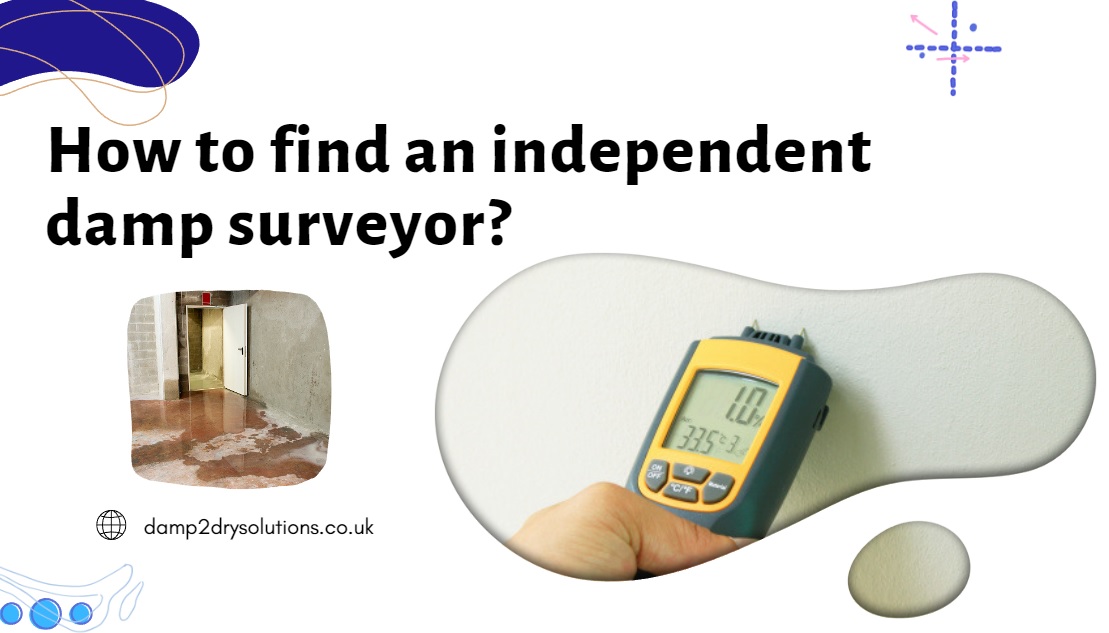Dampness is one of the severe problems faced by many property owners, especially in old buildings. The issue is that dampness can arise from various sources, which can cause problems when trying to put an end to it.
People often try to solve the damp problem symptoms instead of going to the root cause. It is essential for homeowners being unaware of the differences between rising damp and lateral damp.
Excessive moisture in buildings can lead to several problems such as the deterioration of the structural integrity of your home, paint peeling, cracks in walls, decorative spoiling, plaster staining, and mould – the result of which can cause severe health problems if left untreated.
Let’s explore the difference between rising damp and lateral damp deeper:- Lateral Damp vs. Rising Damp!
What is lateral damp?
Lateral damp is when groundwater penetrates laterally into a building, and it can damage any floor that is in contact with soil. If untreated, this dampness can erode building materials and make the building uninhabitable.
Moisture can make electric sockets dangerous and the place useless for storing materials. Along with the basement damage, lateral dampness can also harm the foundation of the building. Moisture can also cause condensation and mold, which causes various health issues.
What causes lateral damp?
When soil pushes against a cracked wall, groundwater is soaked into the wall. The lower you dig down, the soil becomes wetter, so the risk of lateral damp is increased for basements and buildings on the slope.
It is not limited to the basements; soil slowly rises with time and exposes groundwater to the walls. In these cases, along with damp treatment, it’s worth removing excess soil buildup to stop the problem from recurring.
Lateral dampness can become even more harmful if hygroscopic salts (salt that can absorb water) contaminate the walls. Hygroscopic salts constantly absorb moisture, even from the air, which can rapidly increase a damp problem as the wall is attacked from two fronts.
How to spot lateral damp
Look out for wet patches on the wall, peeling paint, a bubbly appearance, a damp and musty smell, or a discolored and crumbling plaster. The walls are also likely to be cold and wet to the touch, and if hygroscopic salts are present, you may see a white chalk-like coating.
How lateral Damp Can Be Treated
The way lateral dampness is treated is by getting rid of moisture, but sometimes this cannot be easy, especially when the lateral penetration is the cause of the dampness. A leaky gutter is relatively simple to repair, while a basement covered in dampness will be much harder to remedy. You may need an expert’s help to fix lateral damp.
- Reseal doors and windows – if your window and door mounting look a little worse for wear, remove all the old sealants and replace them with a high-quality silicone sealant.
- Replace crumbling mortar – you can do it yourself because new mortar will be visible against old mortar to substitute a whole wall or section.
- Use a water sealer to seal the wall – spray the water sealer into the wall; the water will soak into the first few millimeters of brick, sealing up the tiny holes.
- Take a look at the cavity – it’s very much possible there’s some kind of cavity in your wall, but treat it with the professionals as they will be able to have a look with a suitable camera!
Preventing lateral damp in the future
To prevent lateral dampness in the future, you’ll need to check seals, connections, and waste pipes regularly. Always look out for problems, as damp can easily make its way through the building.
Rising Damp – What it is?
Rising dampness is caused when water is drawn from the ground through capillary action in your building materials like brickwork and mortar. It causes damage to internal walls. This indicates that groundwater is drawn up through small holes in the bricks like a collection of straws.
Increasing rising dampness is usually detected by the damage it does to a building’s internal walls. Paint starts peeling off, plaster deteriorates with time, and wallpaper loosens. Sometimes the damp problems could be seasonal.
A visible blemish appears on the wall in the area where underground water has hit. This is a common symptom of rising dampness and can result in excessive damage to the building.
Also read: – What is Water Ingress?
Signs of Rising Damp
Rising damp causes massive damage to the buildings. Here are some signs that can help you identify rising damp:
- Peeling of plaster and paint
- loosening of wallpaper
- Surfaces with blemishes or ‘tide marks’ caused by salts and damp
- Rusting of fasteners made of iron and steel
What Causes Rising Damp?
- If DPC doesn’t shield your home, rising damp will likely occur.
- Salt sediment can be observed in the wall because of vinyl wallpapers, paints, and tanking systems.
- Surface water infiltration into your home through brickwork may cause rising damp.
- Soluble salts in the underground water enter the building’s internal and exterior walls resulting in excess moisture, causing rising damp.
What is the Best Way to Get Rid of Dampness?
As soon as you notice signs of dampness, the easier it will be to minimize it. Here are some methods to learn how to solve rising damp problems.
Make Sure Your Home is Well Ventilated
Condensation is the most basic form of damp which can be fixed easily at a low cost in minimum time. Increased air circulation will help in reducing the condensation problem.
Most of the moisture comes from the bathroom, and the kitchen, so make sure your bathroom and kitchen must-have extractor fan.
Examine the gutters
Water leaking from the gutters can cause the rising damp problem. You can fix this problem by yourself without any assistance at a low cost.
You can examine the damp by wall discoloration, damp spots, wet floor, peeled plaster, etc. Water leaking from pipes and gutters on the outside wall of your home can cause rising damp, so check them for cracks.
Invest in a Dehumidifier
As the name suggests, the Dehumidifier helps remove the air’s humidity. Dehumidifiers can help if you detect moisture in the air from everyday activities like cooking, washing, and showering, which can cause high moisture content.
A dehumidifier may be worth buying if you have tidemarks on your walls, mould spores in your shower, a musty odor, or condensation on your windows.
Worried About Damp In Your Home?
If you’re concerned about a damp problem in your home and would like to resolve the issue before it gets any worse, in that case, you should get in contact with Damp2Dry Solutions.
With the help of specialist training and the latest damp surveying equipment, we will be able to find the origin of any damp problem and offer you the most appropriate and cost-effective solution.

We have regional teams in the following areas: Huddersfield, Wakefield, Rotherham, Bridlington, Sheffield, Doncaster, Leeds, and Bradford. For a Quote and Advice, Call us on 0148 436 7130 or visit here.





